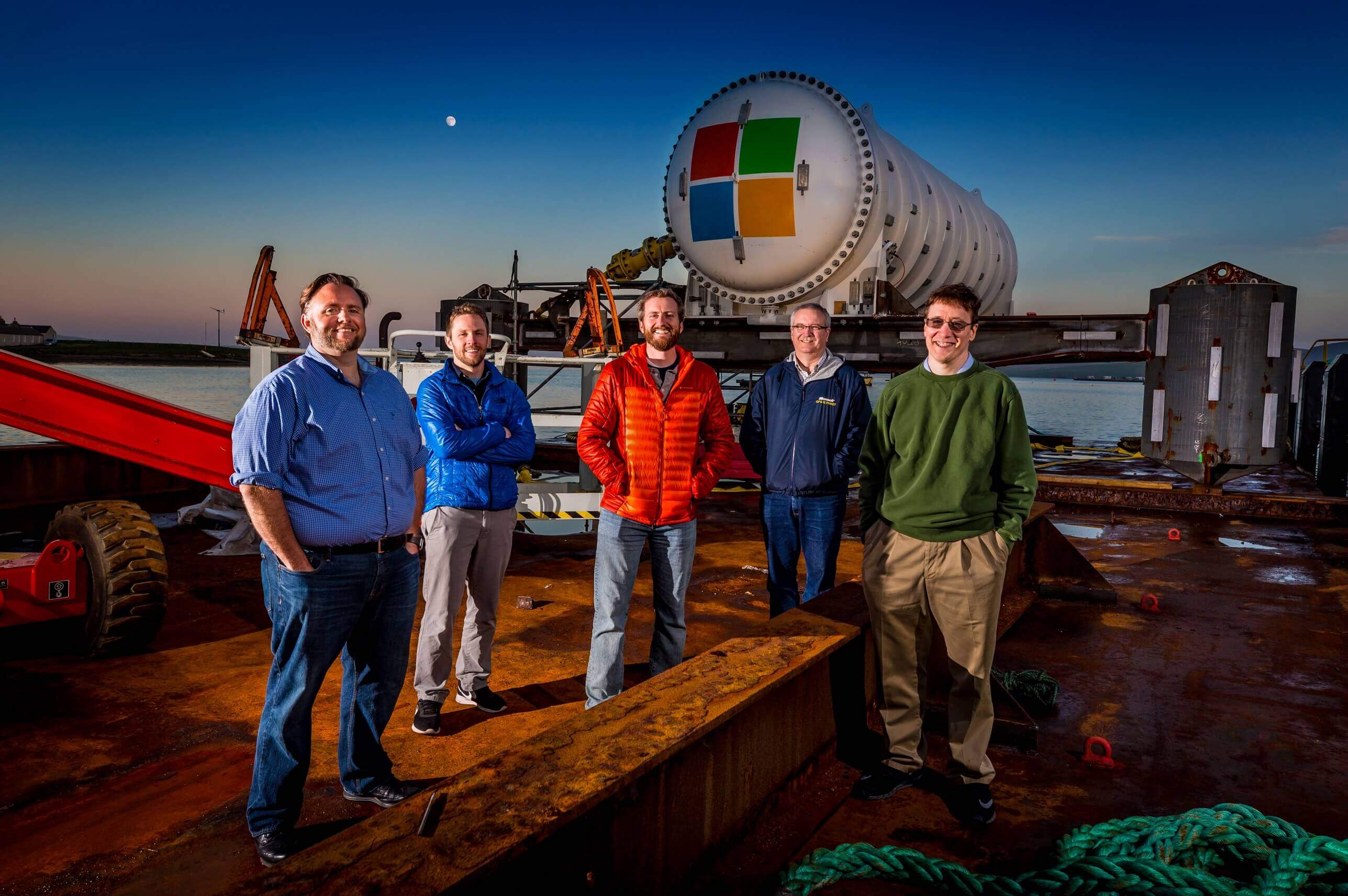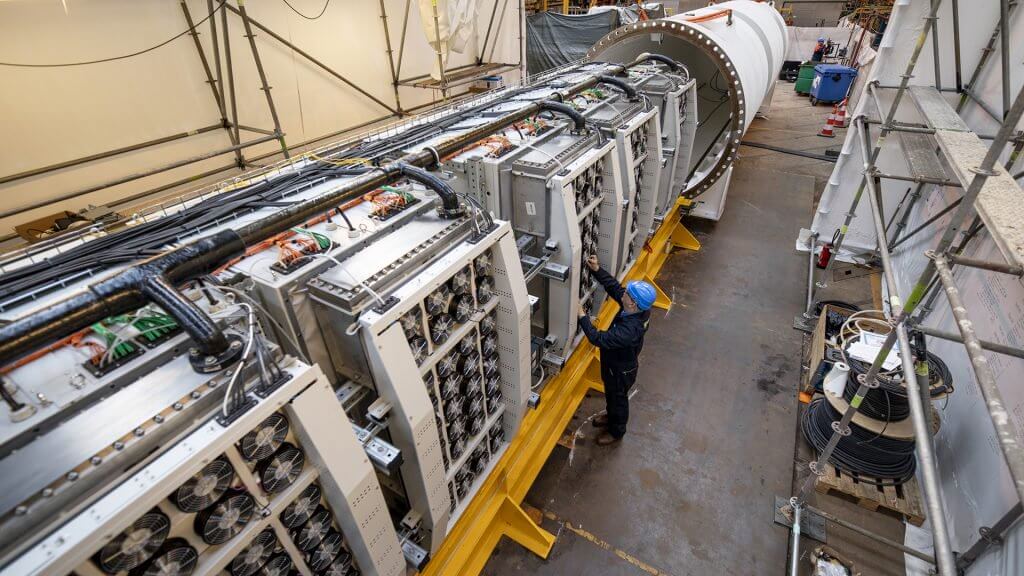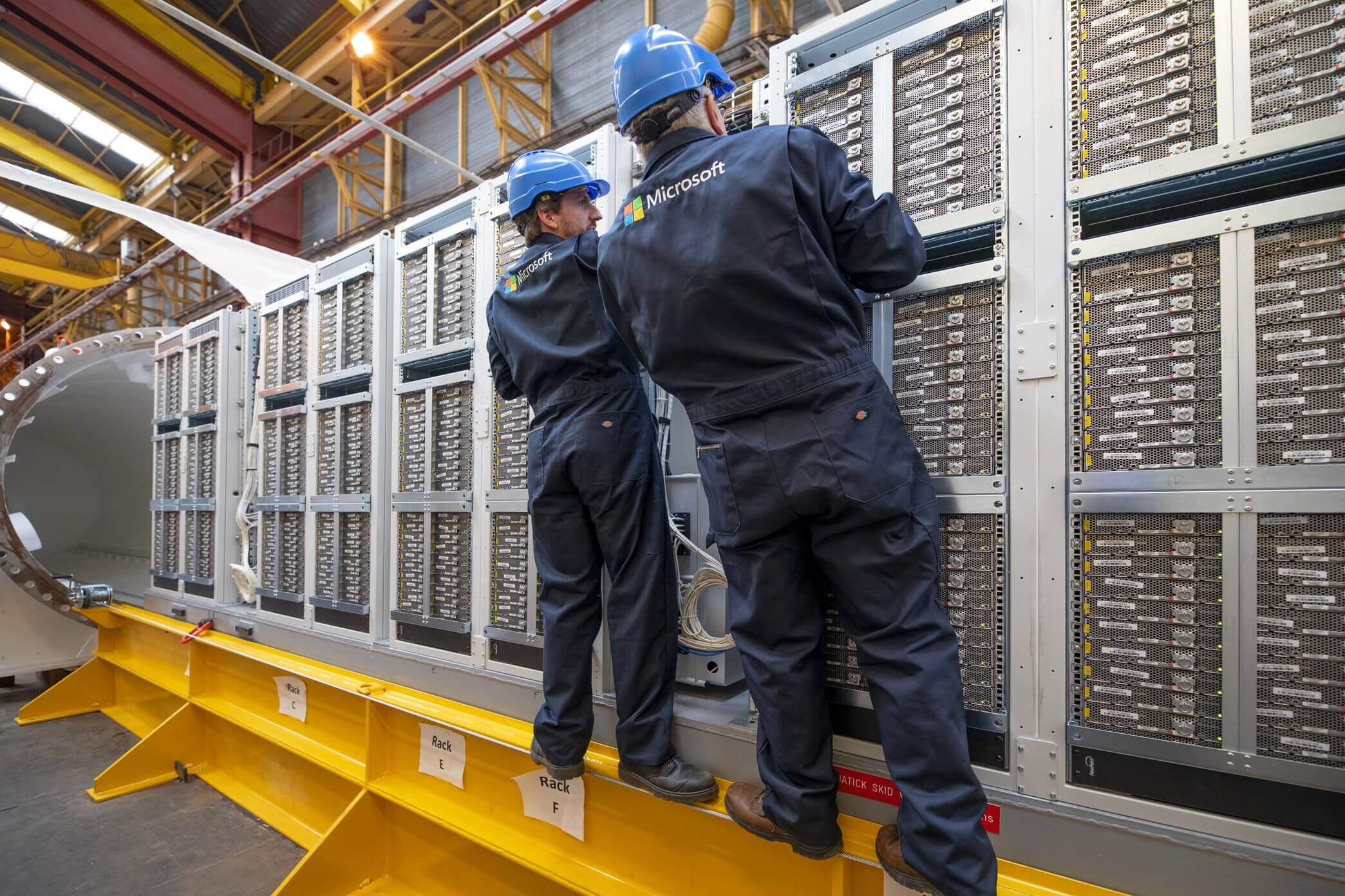Forward-looking: Rapidly deployable data centers with low latency access for the majority of the population could become a reality very quickly if Microsoft's sunken tube of technology proves to be successful.

Project Natick began several years ago as a moonshot at Microsoft to build an underwater data center. After initial research and development phases, a three-month trial was conducted in the Pacific. Moving forward to present day, a submersible data center capsule has been deployed 120 miles off the coast of Scotland.
Inside the 40-foot long tube lies 12 racks filled with a total of 864 servers. Sea water is pumped through radiators in the back of each rack to keep everything running smoothly. The capsule itself then disperses heat into the surrounding waters just as a submarine does by running part of liquid cooling loops through cold water. No measurable heating of water is detected once beyond a few inches away from the outside of the data center.

In order to power the submerged vessel, a cable is run from Orkney Island that is running off completely renewable energy sources. At full operating capacity, the 864 servers can pull up to 250kW. For a data center, this is extremely low since that averages to less than 300W per server. It should be taken with a grain of salt though as Microsoft has not detailed the hardware specifications of its sunken data center.
Over the next year, Microsoft's research team will be closely watching the underwater data center to see how it is performing. Internal humidity levels, power consumption, temperatures, and other statistics will be collected routinely. Should any hardware fail during the first year, there is no way to perform a repair.

Placing submerged servers off the coasts of densely populated areas has the potential to greatly reduce experienced latency. The majority of the world's population lives near large bodies of water capable of supporting similar submerged capsules.
Going forward, Microsoft may be able to rapidly deploy new data center capsules in as little as 90 days. Installing a new data center can take upwards of two years for traditional installations, making Project Natick a game changer for providing enterprise-grade compute resources.
https://www.techspot.com/news/74954-microsoft-submerges-data-center-off-coast-scotland.html

